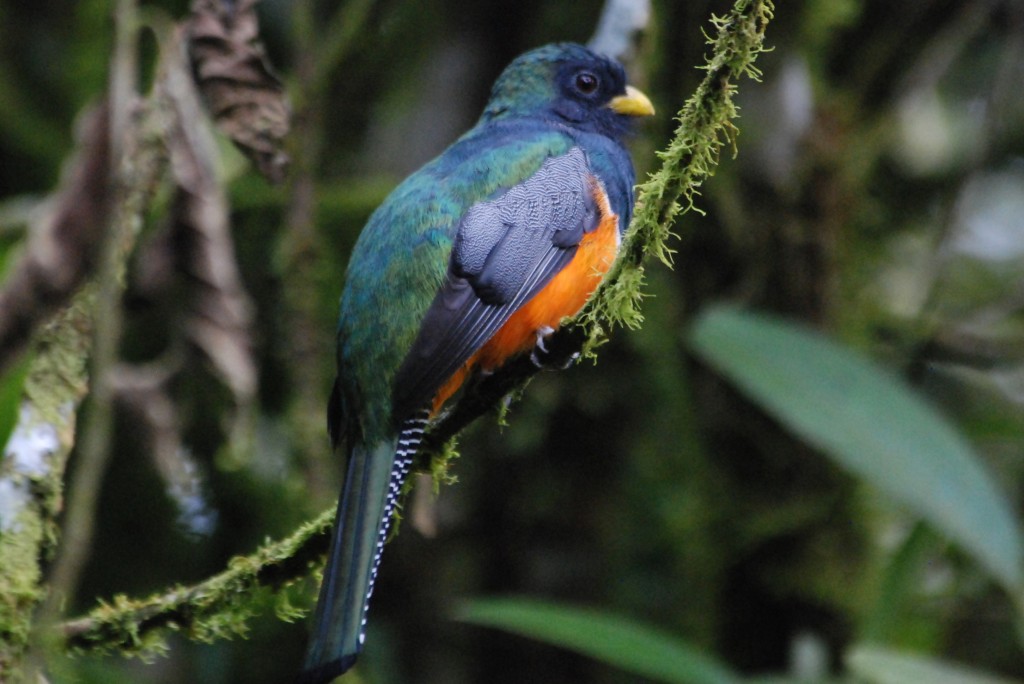Today we are presenting our research projects to the rest of the class. Ordinarily, the pressure to complete a project on time for any kind of research can be stressful, but these required a heightened level of urgency. Our group focused on measuring the number of different groups of organisms we collected in various streams, pools, and other freshwater habitats. While we initially focused solely on macroinvertebrates, or those that can be seen with the naked eye, such as clams, midge larvae, or snails. This might have been a very interesting study, but we were unable to identify individuals to the species level. In addition, we were finding many tadpoles throughout the sites. Thus, we settled on sampling any potential “classes” of animals we encountered. Classes are a higher organizational level of life than species and some of the ones which we found include Amphibia (tadpoles), Insecta (water beetles, midges), Bivalvia (clams), and Gastropoda (snails).
Typically, ecologists will use measures of diversity to compare communities. These allow for comparisons that may hint at the presence (or absence) of processes that are driving these patterns. For our project, we focused on richness, evenness, and the Shannon diversity index. While these are typically used for the species level, they have also been used for higher levels of organization. Richness is simply the number of different types of organisms in a given area. It does not account for the number of those organisms relative to each other, e.g. community A with four iguanas and two toucans has a species richness of 2, while community B with five iguanas and two toucans still has a richness of 2. Evenness describes the relative numbers of each type relative to another type. If community A has five iguanas and five toucans, it is more “even” than a community with seven iguanas and five toucans, but both are equally “rich.” The Shannon diversity index accounts for both richness and evenness and allows for a broader comparison. This index accounts for rare species better than other indices.
The tropical setting made for particularly interesting adventures while we were in the field collecting data. Several times our group would head out under a sunny sky only to be met with a downpour minutes later. This, along with our inability to sample during the morning, made it challenging to collect a lot of data. However, it certainly added to the experience. During one of our outings, we were sampling vernal pools late at night and stumbled across a tiger-heron. These large, beautiful birds have distinctive patterning and long necks. We saw it standing as a silhouette in the tall grass, either stalking potential prey or ensuring we wouldn’t see it. Off in the distance, we heard howler monkeys and thunder clashing in battle (they aren’t particularly fond of loud noises). However, lightning would occasionally illuminate this bird for us to see it in all its glory.
During another outing, we encountered two aquatic turtles, several species of frogs, and glimpsed a juvenile caiman. While these were not our focal species, the ability to interact at such a fine scale brought to light many of the large scale concepts of ecology that are taken for granted. Some research focuses on ‘model’ organisms or organisms which are of particular importance for testing an idea. However, what is lost is the bigger picture: the ecosystem is more than the sum of its parts. There may be some systems which are too complex for us to truly depict, but we can still use science to get a glimpse into how they operate. Indeed, all models are wrong but some are useful. Despite the limitations of empirical research, it is the best method we have for examining reality. We often take for granted what is ‘known,’ but what is currently known was not always so. The sheer amount of work required for even the smallest of projects always amazes me and makes me appreciate the endeavors of scientists worldwide all the more.



